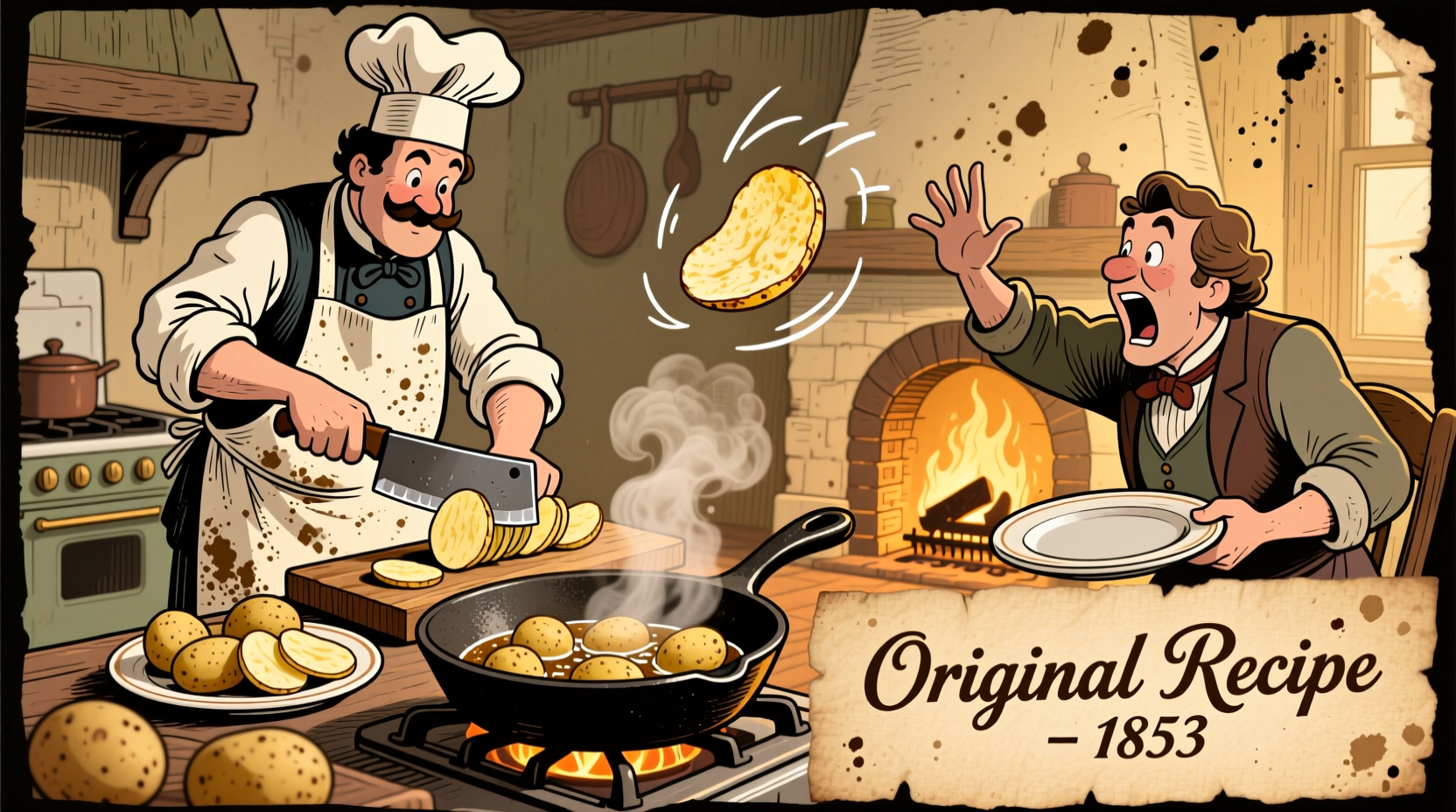George Crum, a Native American and African American chef, invented potato chips in 1853 at Moon's Lake House in Saratoga Springs, New York. This definitive historical account separates fact from popular myth while tracing how a kitchen accident transformed into America's favorite snack food.
For over 170 years, the crispy, golden potato chip has satisfied snack cravings worldwide. But how did this simple creation become a global phenomenon? Understanding the true origin story of potato chips reveals fascinating insights about 19th century American dining culture, culinary innovation, and how food legends develop.
The Saratoga Springs Setting: Where Culinary History Happened
In the summer of 1853, Moon's Lake House, an exclusive resort in Saratoga Springs, New York, attracted wealthy patrons seeking relaxation at its mineral springs. George Crum, a skilled chef of Native American (African American according to some records) heritage, worked in the kitchen. The resort's clientele expected perfection with every dish, creating high-pressure conditions where small complaints could trigger significant consequences.

Separating Fact from Fiction: The Potato Chip Origin Story
The popular legend claims that a particularly fussy customer repeatedly sent back Crum's French fries, complaining they were too thick. In frustration, Crum sliced potatoes paper-thin, fried them until crisp, and added excessive salt—expecting the customer to reject them. Instead, the customer loved them, and "Saratoga Chips" were born.
While this narrative contains elements of truth, historical evidence paints a more nuanced picture. Crum's sister, Catherine Wicks, later claimed she actually created the first batch while working as a cook at the same establishment. Family records and contemporary newspaper accounts suggest the invention likely emerged from collective kitchen experimentation rather than a single dramatic incident.
| Popular Myth | Historical Evidence |
|---|---|
| A single angry customer prompted the invention | Multiple customers had complained about thick fries over time |
| Created purely out of spite | Part of ongoing culinary experimentation with potato preparation |
| George Crum alone invented them | Family accounts credit collaborative kitchen efforts, possibly including his sister |
| Instantly popular | Took years to gain widespread popularity beyond the resort |
From Restaurant Specialty to Mass-Produced Snack: The Evolution Timeline
Understanding how potato chips evolved from a regional specialty to a global snack requires examining key milestones:
- 1853: George Crum serves thin, crispy fried potatoes at Moon's Lake House
- 1880s: Saratoga Chips become a regional specialty, sold in tins to tourists
- 1920s: Herman Lay begins mass-producing potato chips in the South
- 1932: Laura Scudder invents the sealed wax paper bag, extending shelf life
- 1950s: Potato chips become America's favorite snack food
- 1960s: Flavor innovations (salt & vinegar, barbecue) expand market appeal
- Today: Global industry worth over $30 billion annually
Why the Saratoga Springs Story Endures
The enduring appeal of the George Crum narrative demonstrates how food history often simplifies complex origins into memorable stories. Food historians from the Smithsonian Institution note that "culinary origin stories frequently attribute inventions to single individuals when, in reality, food innovations typically emerge from collective cultural practices."
The potato chip's journey from kitchen accident to global phenomenon reflects broader patterns in American food history. According to research published by the National Museum of American History, "the commercialization of regional specialties into mass-produced foods represents a fundamental transformation in American eating habits during the 20th century."
Modern Significance: More Than Just a Snack
Today's potato chip industry continues evolving with health-conscious innovations while maintaining the core appeal that made them popular. Understanding the authentic history of potato chips helps consumers appreciate both the culinary ingenuity behind this simple food and the complex journey from regional specialty to global staple.
As food historian Dr. Andrew Smith explains in his comprehensive work Potato: A Global History, "The story of the potato chip exemplifies how accidental discoveries, when combined with cultural timing and entrepreneurial spirit, can transform everyday ingredients into cultural icons."
Frequently Asked Questions
Here are answers to common questions about the invention of potato chips:











 浙公网安备
33010002000092号
浙公网安备
33010002000092号 浙B2-20120091-4
浙B2-20120091-4